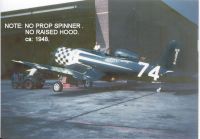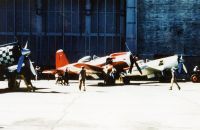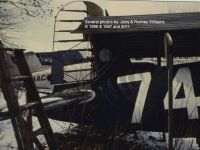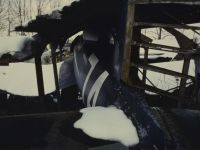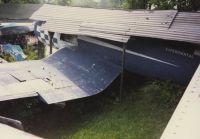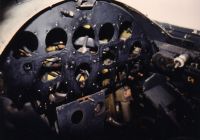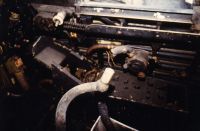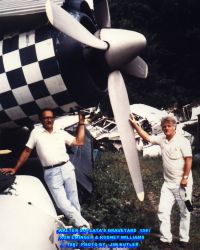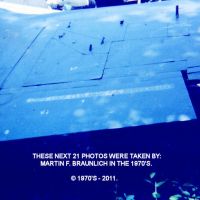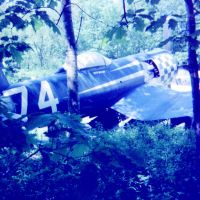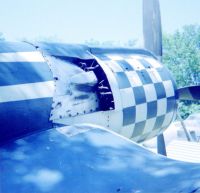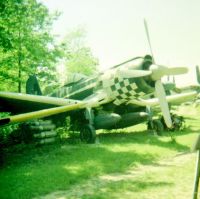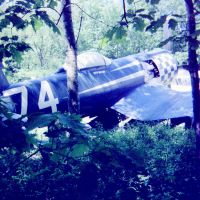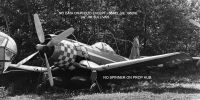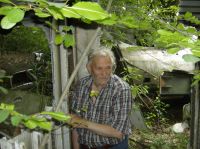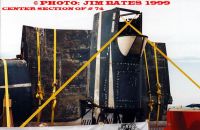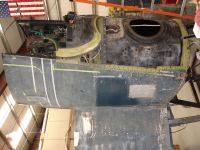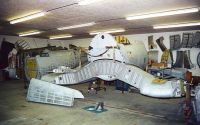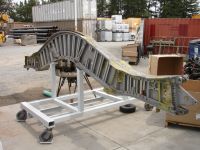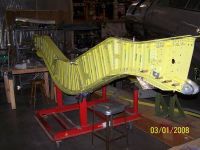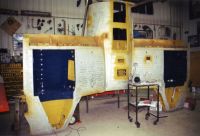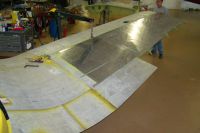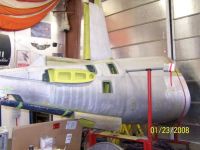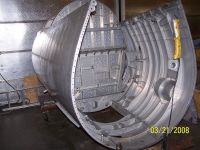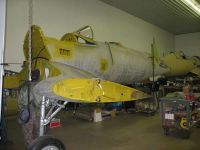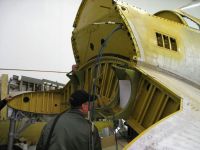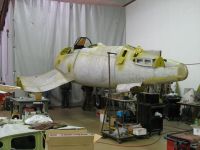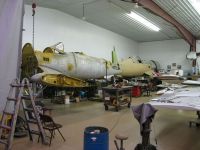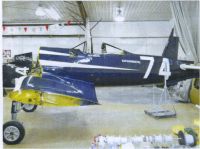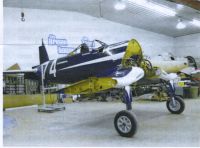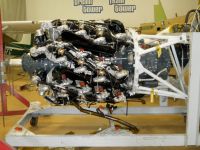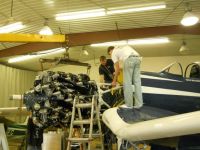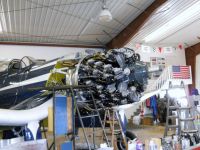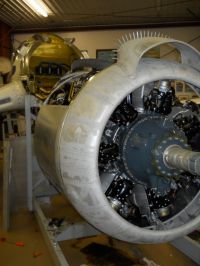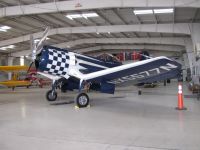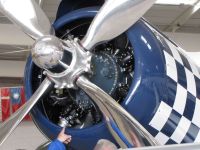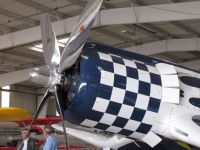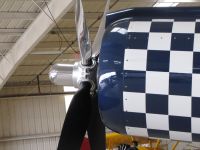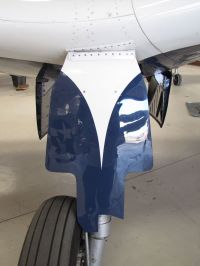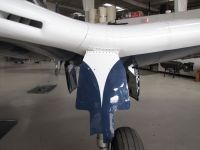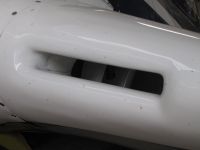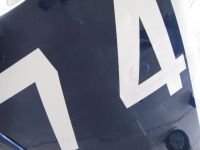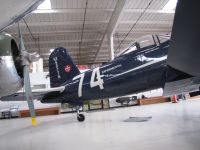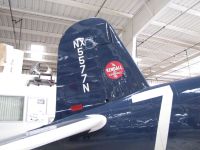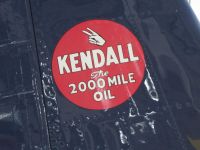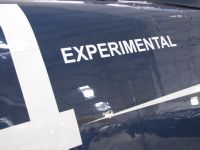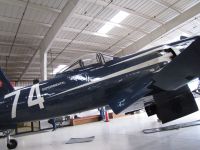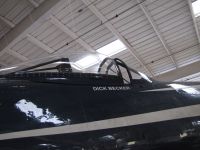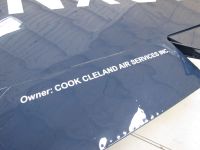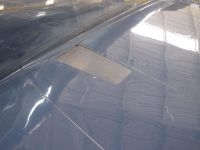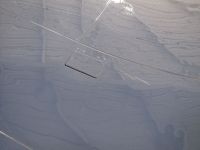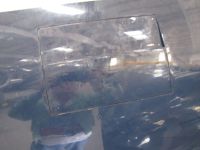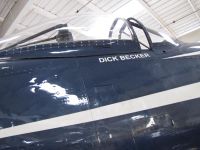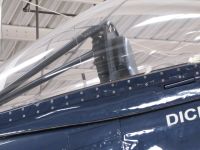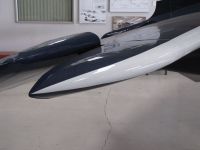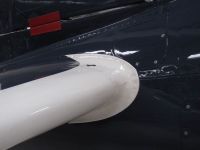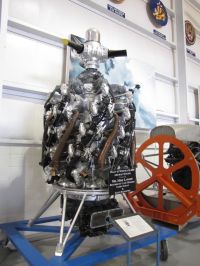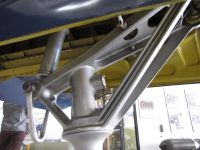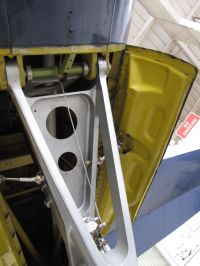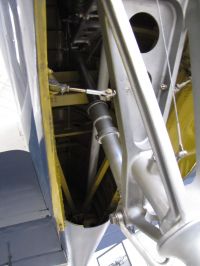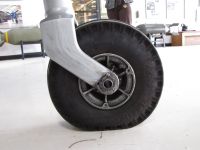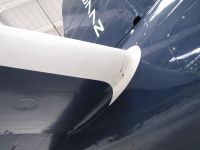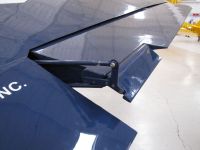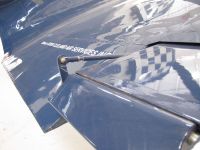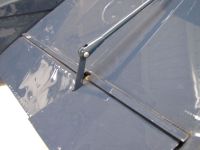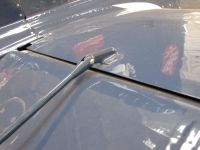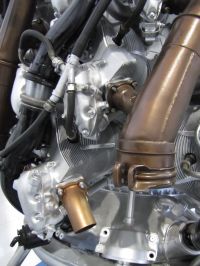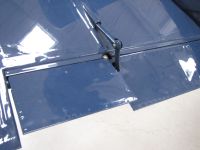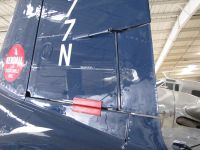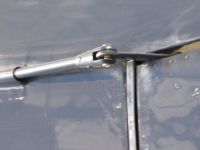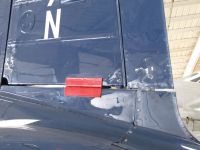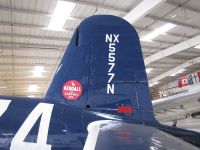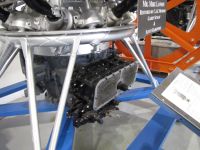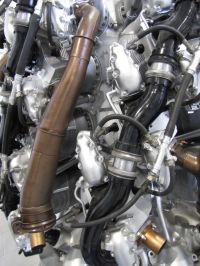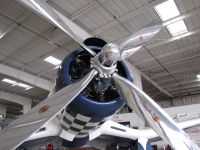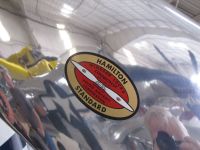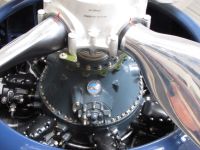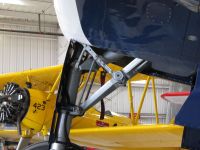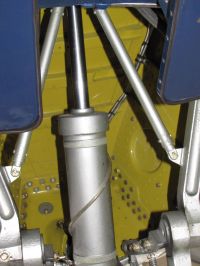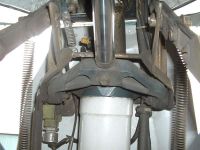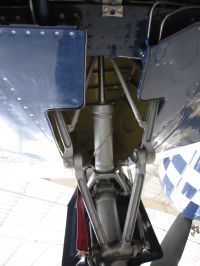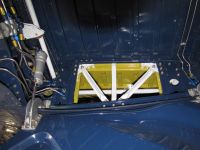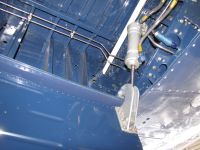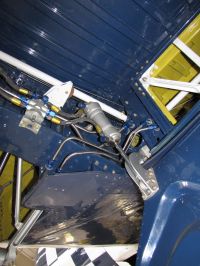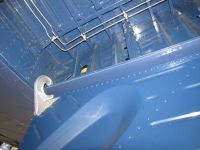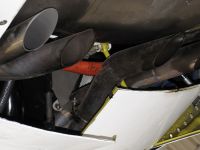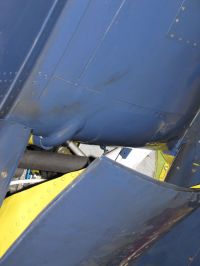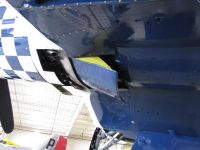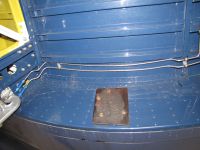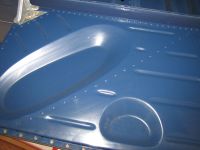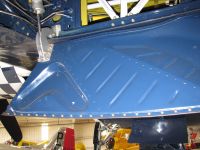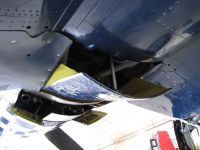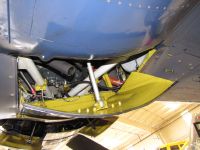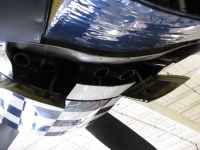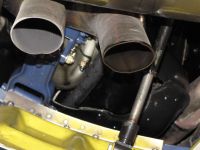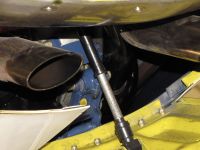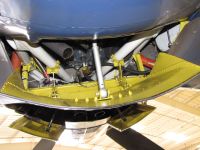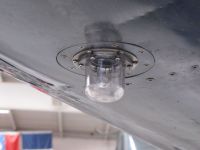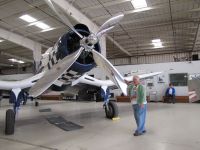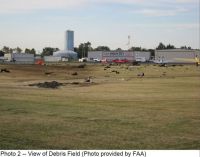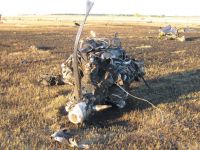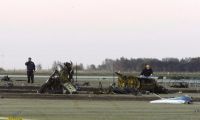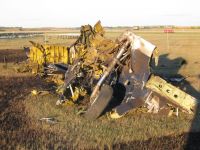Vought F2G Corsair
Photos By Rodney Williams
Short History for the F2G Corsair Airplane
I researched the F2G racing Corsairs from 1984 until 2016, then “downloaded" all the facts on a HD-DVD disk. The disk has about 3,000 items on it.
The Goodyear Tire & Rubber Company of Akron, Ohio, U.S.A. received a contract in early 1942 from the Vought Aircraft Company to build their F4U-1, 1A and finally the F4U-4 Corsair fighter planes.
The company was called Goodyear Aircraft Corporation, which was commonly called "G.A.C.” Special contractors built four large steel buildings at our local airport and named them Plant A; B; C and D. The Corsair was produced in Plant D and when they got into full production, a F4U-1 Corsair came off the assembly line every 80 minutes at a cost of USD$65,000.00. There were an estimated 12,000 men and women working at the factory 24/7. My dad was one of the mechanical engines. I, along with many other young children got jobs at the factory. We delivered parts to different areas of the assembly line that was an estimated 2,000 feet long by maybe 700 feet wide. By the end of the war G.A.C. had produced over 4,000 fighters.
My April 1, 1987 records show that there were 21 Corsairs that were engaged in the F2G program, which were FG-1s, FG-1As and FG-4s. They became known as F2G-1 and dash 2s. The dash 1s were to have non folding wings for use by the Marines, however none were ever produced, so said two of the aeronautical engineers @G.A.C.
The National Air Races, which was held in Cleveland, Oho, U.S.A. was retired in 1942, then resumed in 1946 after WWII came to an end in September, 1945.
Cook Cleland purchased three F2G Corsairs in 1947 and another one in late 1948 and/or sometime in early 1949. His F2Gs were revised from the FG-4 airframes, and had the following B.U. numbers with a race number of: (14693 - 94); (B.U. 88457 - 84); (B.U. 88463 - 74) and (B.U. 88458 - 57).
Ron Puckett purchase his F2G on 03-19-47 for US$1,250.00, which had a B.U. of 14694 with a race number of 18.
Two F2Gs went to the San Diego,California Naval Air Station, then one of them went onto “Pearl Harbor” Naval Air Station that was located in the Hawaii, Islands. Take-off and landing tests were performed on aircraft carriers.
One F2G - 88454 found its last home at the Museum of Flight that is located near Seattle, Washington, U.S.A.
One F2G crashed at the Akron airport, while the other one crashed near by during night-time test flights in 1945.
Cook’s #94 racer was left to rot at the Cleveland airport, and the airport fire department used it for fire practice, then buried it next to one of the concrete runways. Its prop and motor was saved from the burial spot.
His #84 crashed in 1947 during the Air-Races which killed the pilot Tony and destroyed the aircraft.
His #57 was left to rot while he went back to the Navy and flew in the Korean war. It went via a few owners and was rebuilt to like new condition by Bob Odegaard, who sold it to a private collector who lives in Arizona, U.S.A.
Cook's #74 racer was sold to Walter Soplata sometime in the early 1950’s and was kept on his farm in Newberry, Ohio with several other aircraft.
Walter sold it to the Crawford Car Museum in the Cleveland, Ohio area, who in turn finally sold it to Bob Odegaard of Kindred, North Dakota about 1999 and restored it to flying condition. Bob kept me posted with some in-progress restoration photos.
No. 74 flew a few times with Cooks other racer #57 and was stored at the CAF Museum in 2011 for the winter, which is located in Mesa, Arizona, U.S.A.
I was elated to see the plane again in 2011 as I watched it fly during the1949 air races, then visited it at Walter’s farm in 1986.
While flying the restored F2G-2 #88463 Racer #74 for an up and coming air show on September 7, 2012, Bob crashed the airplane killing himself and destroying the vintage bird.
A sad ending for the fastest Navy propellor aircraft during and after WWII.
Sincerely,
Rodney J. Williams
Retired Master Model Builder
Gallery One
Gallery Two
© Rodney Williams 2018
This article created on Wednesday, March 21 2018; Last modified on Wednesday, March 21 2018


